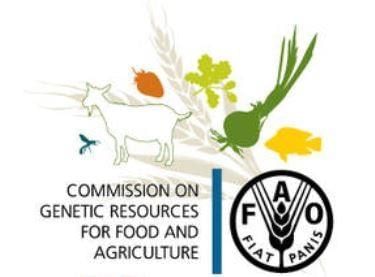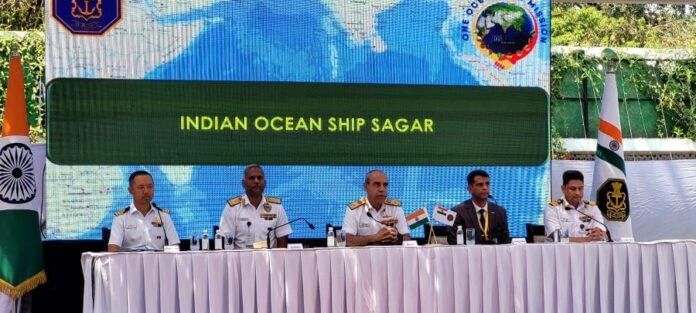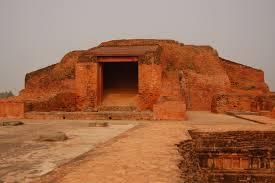UPSC Daily Current Affairs: 25th March 2025 | Current Affairs & Hindu Analysis: Daily, Weekly & Monthly PDF Download
GS1/History & Culture
Lapis Lazuli and its Ancient Significance
Why in News?
This newscard is an excerpt from an original article published in ‘The Hindu’. Lapis lazuli, a deep-blue metamorphic rock, is gaining attention due to its historical significance and aesthetic appeal.
- Lapis lazuli is primarily composed of lazurite, along with calcite and pyrite, which contribute to its vibrant color and characteristic golden specks.
- This gemstone has been valued since ancient times, especially in cultures such as Egypt, Mesopotamia, and Greece.
- It has been a significant trade item, especially during the Indus Valley Civilization (IVC), where it was extensively used in jewelry.
Additional Details
- Geographical Significance: Lapis lazuli is predominantly found in Afghanistan’s Badakhshan province, with additional sources in Chile, Russia, and the United States.
- Historical Usage: In the IVC (3300-1900 BC), lapis lazuli was imported and utilized for crafting beads and ornaments in major archaeological sites like Mohenjo-daro and Harappa.
- The stone held spiritual significance, often used in pendants and amulets, symbolizing high social status and religious importance.
- The artisans of the IVC demonstrated remarkable skill in bead-making, using lapis lazuli alongside other stones to create intricate designs.
Lapis lazuli continues to be celebrated not only for its beauty but also for its rich history and the cultural practices surrounding its use in ancient civilizations.
GS2/International Relations
China ties - Beware Conciliation Without Deterrence
 Why in News?
Why in News?
The political dynamics between India and China have seen a noticeable shift, with India adopting a more conciliatory stance towards its neighbor. Prime Minister Narendra Modi's recent emphasis on dialogue for global stability indicates a potential recalibration in India's foreign policy, raising critical questions regarding India’s strategic interests and regional security concerns.
- India's shift towards a more conciliatory approach in its relations with China.
- Historical context of India-China relations marked by conflict and military confrontations.
- The importance of maintaining military readiness alongside diplomatic efforts.
Additional Details
- Border Tensions: The ongoing border dispute between India and China along the Line of Actual Control (LAC) has roots dating back to the colonial era, leading to significant conflicts such as the Sino-Indian War of 1962.
- Recent Confrontations: Notable incidents include the Doklam standoff in 2017 and the Galwan Valley clash in 2020, which resulted in casualties and a deterioration of bilateral relations.
- Economic Interdependence: Despite military tensions, China remains India’s largest trading partner, with trade exceeding $136 billion in 2023, although marked by a significant trade imbalance.
- Diplomatic Engagements: High-profile meetings between Modi and Xi Jinping, such as the Wuhan and Chennai summits, aimed at stabilizing ties, but were challenged by aggressive actions from China.
- Strategic Calculations: India’s foreign policy prioritizes economic development and stability, necessitating a complex balancing act between engagement with China and partnerships with other nations, particularly the US.
- Military Preparedness: Despite diplomatic overtures, India must enhance its military capabilities and readiness to respond to potential threats, emphasizing the need for long-term investments in defense.
In conclusion, India's evolving approach towards China reflects a pragmatic balance between diplomatic dialogue and necessary military preparedness. While Modi's conciliatory remarks indicate a willingness to stabilize relations, history warns that India must remain vigilant of China's long-term ambitions, ensuring that diplomatic engagement does not compromise its security posture.
GS3/Environment
Heat Action Plans (HAPs)
Why in News?
A recent study has revealed that many heat action plans (HAPs) proposed by various Indian cities lack effective long-term strategies to address the escalating threat of extreme heat in the country. Furthermore, even cities that have developed such strategies have struggled with their implementation.
- A heat action plan serves as an early warning system and preparedness strategy for extreme heat events.
- The plan outlines both immediate and long-term actions aimed at enhancing preparedness, sharing information, and coordinating responses to mitigate health impacts on vulnerable populations.
- The National Disaster Management Authority (NDMA) is working on HAPs across 23 states prone to heatwave conditions, in collaboration with local authorities.
- There has been a concerning increase in heatstroke-related deaths in India, rising from 530 in 2020 to 730 in 2022, before decreasing to 269 suspected and 161 confirmed deaths in 2024.
Additional Details
- Study Overview: Conducted by the Sustainable Futures Collaborative, the study focused on cities with populations over 1 million, projected to face significant increases in dangerous heat index values, including Bengaluru, Delhi, and Mumbai.
- The researchers interviewed government officials and representatives from various departments responsible for heat management in these cities.
- Findings: The study concluded that while short-term emergency measures, such as ensuring access to drinking water, were in place, long-term strategies were either lacking or poorly executed.
- Long-term measures needed include household cooling solutions, work loss insurance, enhanced fire management for heatwaves, and electricity grid improvements.
- The focus of long-term strategies has primarily been on health systems rather than preventative measures, highlighting a need for increased funding for effective implementation.
The findings underscore the urgency for cities to develop and implement comprehensive strategies that not only address immediate concerns but also plan for sustainable resilience against extreme heat.
GS3/Environment
Commission on Genetic Resources for Food and Agriculture (CGRFA)
 Why in News?
Why in News?
The 20th meeting of the Commission on Genetic Resources for Food and Agriculture (CGRFA-20) is currently taking place in Rome, highlighting global efforts to manage biodiversity related to food and agriculture.
- The CGRFA is the sole permanent intergovernmental body focusing on biodiversity aspects of food and agriculture.
- Established in 1983 under the Food and Agriculture Organization (FAO) of the United Nations, it aims to ensure fair and equitable sharing of benefits from genetic resources.
- Membership includes 179 countries and the European Union.
Additional Details
- Focus Areas: The CGRFA coordinates global initiatives on biodiversity affecting forestry, livestock, and aquatic species, including vital pollinators and soil organisms essential for food production.
- Structure: Governed by a biennial session, the Commission's work is guided by a bureau elected by member states, with the CGRFA Secretariat, hosted by FAO, providing technical and logistical support.
- Policy Formulation: Develops global action plans and codes of conduct for sustainable use and conservation of genetic resources.
- Global Assessments: Facilitates periodic assessments to monitor genetic resources and biodiversity trends.
- Sustainable Use of Biodiversity: Promotes biodiversity for food security, sustainable agriculture, and climate adaptation.
- Fair and Equitable Benefit Sharing: Ensures fair distribution of benefits derived from genetic resources, particularly plant materials under international treaties.
One significant achievement is the adoption of the International Treaty on Plant Genetic Resources for Food and Agriculture (ITPGRFA) in 2001, which acknowledges farmers' contributions to crop diversity and establishes a global framework for accessing plant genetic materials for breeders, farmers, and scientists.
Consider the following international agreements:
- The International Treaty on Plant Genetic Resources for Food and Agriculture
- The United Nations Convention to Combat Desertification
- The World Heritage Convention
Which of the above has / have a bearing on biodiversity?
- Options: (a) 1 and 2 only (b) 3 only (c) 1 and 3 only (d) 1, 2 and 3
GS2/Governance
Why Indian Cities Need Local Solutions, Not One-Size-Fits-All Plans
Why in News?
In the forthcoming decades, India is expected to have the largest urban population globally, highlighting the urgent need for tailored urban development solutions that address local needs.
- India's urban future is shaped by plans often disconnected from local realities.
- The Central government's top-down approach frequently overlooks the unique needs of different cities.
- Experts advocate for a shift towards localized urban planning and funding.
Additional Details
- Localized Approach: India is experiencing rapid urbanization; however, many urban development plans are designed without considering local contexts, leading to ineffective outcomes.
- Central Government's Role: The Central government influences urban policy through schemes like the Pradhan Mantri Awas Yojana (PMAY) and Swachh Bharat Mission (SBM), but their one-size-fits-all approach misses local necessities.
- Top-Down Model Challenges: This model leads to a lack of flexibility, mismatch of priorities, and wasted resources, as cities must adhere to centrally set rules that may not align with their actual needs.
- Urbanization Variability: Different regions, such as Kerala and Gujarat, exhibit distinct urbanization patterns, indicating that a singular approach cannot adequately address the diversity of urban challenges.
- Recommendations: Experts suggest that at least 70% of urban development funds should be allocated directly to states and cities, promoting locally decided plans based on scientific planning and public consultation.
In conclusion, India's urban challenges require a shift towards empowering local governments to address their unique priorities and needs. A centralized approach is insufficient for the complex realities faced by cities. By enabling local solutions, India can work towards creating livable, inclusive, and sustainable urban environments for the future.
GS2/International Relations
IOS Sagar: India-Africa Maritime Engagement
 Why in News?
Why in News?
The Indian Navy is gearing up to engage in a significant multilateral maritime exercise with African nations, known as the ‘Africa-India Key Maritime Engagement’ (AIKEYME). This initiative aims to enhance maritime security cooperation in the Indian Ocean region.
- The exercise, IOS Sagar, is scheduled from April 5 to May 8, 2025.
- INS Sunayna, an offshore patrol vessel, will represent India in this exercise.
- Participants include India and nine African nations: Comoros, Kenya, Madagascar, Maldives, Mauritius, Mozambique, Seychelles, Sri Lanka, and South Africa.
Additional Details
- IOS Sagar: This initiative focuses on maritime security cooperation in the Southwest Indian Ocean Region.
- Activities: The exercise will involve port calls at several locations including Dar-es-Salaam (Tanzania), Nacala (Mozambique), Port Louis (Mauritius), Port Victoria (Seychelles), and Male (Maldives).
- Joint surveillance will be conducted in the Exclusive Economic Zones (EEZs) of Tanzania, Mozambique, Mauritius, and Seychelles.
- Training for African personnel will be provided at Indian naval institutions in Kochi, covering naval operations, watchkeeping, and security drills.
What is AIKEYME?
- AIKEYME: This acronym symbolizes ‘Unity’ in Sanskrit and is co-hosted by the Indian Navy and the Tanzania People's Defence Force (TPDF).
- It involves participation from India and ten African nations, including Comoros, Djibouti, Eritrea, Kenya, Madagascar, Mauritius, Mozambique, Seychelles, South Africa, and Tanzania.
- The exercise will take place over six days in mid-April 2025.
- Inauguration will be conducted by the Defence Minister.
Training & Operational Phases
- Harbour Phase: This phase will include table-top and command post exercises emphasizing piracy and maritime information-sharing, alongside seamanship training and Visit Board Search and Seizure (VBSS) operations.
- Sea Phase: Activities will include Search and Rescue (SAR) operations, small arms firing, helicopter operations, and various maritime security drills.
What is Security and Growth for All in the Region (SAGAR)?
- Launched in 2015: SAGAR aims to create a free, open, inclusive, peaceful, and prosperous Indo-Pacific region.
- Key components:
- Countering Chinese Influence: Strengthening ties with Indian Ocean Region (IOR) nations.
- Maritime Security: Addressing piracy, terrorism, and illegal activities.
- Capacity Building: Providing support to IOR countries in disaster management and infrastructure development.
- Economic & Connectivity Projects: Fostering regional trade and investment.
- MAHASAGAR: This initiative, announced by the Prime Minister, focuses on enhancing maritime security and regional cooperation.
Key Indian Initiatives Supporting SAGAR
- South Asia Satellite (SAS): This project enhances communication and disaster response among neighboring countries.
- Mission SAGAR: Provided COVID-19 medical assistance to Indian Ocean littoral states.
- Vaccine Maitri: Supplied COVID-19 vaccines to countries such as Bhutan and Maldives.
- Kaladan Multi-Modal Transit Project: This project improves connectivity between India, Myanmar, and Southeast Asia.
This maritime engagement exercise underscores India's commitment to strengthening ties with African nations and enhancing security in the Indian Ocean region.
GS2/Polity
Judiciary’s In-House Inquiry Against Judge
Why in News?
Chief Justice of India (CJI) Sanjiv Khanna has initiated an unprecedented three-member in-house inquiry into the conduct of Delhi High Court judge Justice Yashwant Varma. This action follows allegations concerning the discovery of wads of currency notes in his official residence, where a fire incident occurred on March 14.
- The inquiry process is distinct from the impeachment process as outlined in the Constitution of India.
- Impeachment of judges is governed by Article 124(4), which requires a two-thirds majority in both houses of Parliament.
- The in-house procedure was established to hold judges accountable for misconduct that does not meet the impeachment standard.
Additional Details
- Impeachment Process: A judge can only be removed for "proved misbehaviour" or "incapacity." This requires a vote of at least two-thirds of those present and voting in both the Lok Sabha and Rajya Sabha.
- The in-house inquiry mechanism was created in response to the need for accountability after allegations against then Bombay High Court Chief Justice A M Bhattacharjee surfaced in 1995.
- In 2014, the Supreme Court clarified the in-house procedure following a sexual harassment complaint against a High Court judge, outlining a seven-step process for handling such cases.
- The inquiry begins when a complaint is received by the Chief Justice of a High Court, the CJI, or the President, and can be dropped if deemed insufficiently serious.
- If the preliminary report suggests a deeper investigation, a three-member committee is formed to conduct the inquiry and report findings back to the CJI.
In conclusion, the internal inquiry process established by the Supreme Court serves as a vital mechanism for maintaining judicial accountability and addressing misconduct among judges, ensuring that the integrity of the judiciary is upheld.
GS1/History & Culture
Reviving Vikramshila University
 Why in News?
Why in News?
The Archaeological Survey of India (ASI) is currently working on the development of the ancient site of Vikramshila University to enhance tourism in the region. The Bihar government has earmarked 202.14 acres in Antichak village, Bhagalpur, for the establishment of a Central University at this historic site. This project, initially approved by the Centre in 2015 with a budget of ₹500 crore, faced delays due to land acquisition issues.
- Vikramshila University is being revived as a significant educational institution in Bihar.
- The site is historically important and aims to boost local tourism.
Additional Details
- Location: Vikramshila University was located in Bhagalpur, Bihar, along the banks of the Ganges River, marking its significance in eastern India.
- Founder: Established by King Dharmapala of the Pala Dynasty during the late 8th to early 9th century AD in response to declining educational standards.
- Significance: The university became a central hub for Tantric Buddhism and Vajrayana Buddhism, specializing in tantric and occult studies, setting it apart from other institutions like Nalanda.
- Vikramshila attracted over 1000 students and 100 teachers from across India and abroad, producing notable scholars such as Atisa Dipankara, who played a key role in spreading Buddhism in Tibet.
- Features: It featured a central stupa surrounded by 208 cells for student-monks and had a library with a unique cooling system to preserve manuscripts. The curriculum included subjects such as theology, philosophy, grammar, metaphysics, and tantras.
- Leadership: The university was administered by a Kulpati or Mahasthavir, ensuring efficient management and operation.
- Decline: Vikramshila University was ultimately destroyed by Muhammad Bin Bakhtiyar Khalji around 1203 AD, leading to its downfall.
The revival of Vikramshila University represents an important step towards restoring a vital part of India's educational heritage, aiming to rekindle its historic legacy while contributing to contemporary academic and cultural landscapes.
GS2/International Relations
50 Years of Farakka Barrage
Why in News?
The Farakka Barrage, completed nearly 50 years ago, plays a significant role in India's water management and international relations with Bangladesh.
- Located on the Ganges River in Murshidabad District, West Bengal, India, near the Bangladesh border.
- Construction started in 1962 and finished in 1970, costing approximately 1 billion dollars.
- Became operational on April 21, 1975, and features a feeder canal of about 42 km that connects to the Hooghly River.
Additional Details
- Purpose: The barrage diverts up to 1,800 cubic meters per second of water from the Ganges to maintain the navigability of Kolkata Port and to flush out sediment.
- Construction Details: Built by Hindustan Construction Company, it includes 109 gates, with 108 over the river and one over low-lying land as a precaution.
- Significance: The 1996 Ganges Water Sharing Treaty ensures equitable water distribution between India and Bangladesh, addressing concerns over water scarcity and agricultural support during dry seasons.
- Bangladesh, especially regions like Mongla and Khulna, relies heavily on the Ganges, and the diversion of water has led to diplomatic tensions and environmental issues.
- Environmental Issues: Water diversion has resulted in salinization, soil degradation, and biodiversity loss in Bangladesh, particularly affecting the Sundarbans mangrove forests.
The Farakka Barrage remains a crucial infrastructure project, balancing the needs of irrigation and water management while navigating the complexities of international relations and environmental sustainability.
GS3/Environment
Urban Heat Island (UHI)
Why in News?
Hyderabad has recently been identified as an Urban Heat Island (UHI), with temperatures significantly higher than those in surrounding rural areas. This situation has been acknowledged by the Telangana government in its Socio Economic Outlook 2025 report, highlighting concerns over climate conditions and public health. Elevated nighttime temperatures can impede recovery from daytime heat, leading to prolonged physical stress on the population.
- An Urban Heat Island (UHI) denotes a phenomenon where urban regions exhibit higher temperatures compared to nearby rural areas due to urbanization and human activities.
- The UHI effect raises various environmental and health-related issues in urban settings.
Additional Details
- Causes of UHI:
- Reduced Vegetation: The lack of greenery contributes to decreased cooling through evapotranspiration.
- Heat Absorption by Buildings & Roads: Materials like concrete, asphalt, and glass absorb and retain heat.
- Waste Heat Emission: Heat released from air conditioners, vehicles, and industrial processes exacerbates the problem.
- Altered Wind Patterns: High-rise buildings can obstruct natural wind flow, diminishing cooling effects.
- Air Pollution: The presence of smog and pollutants traps heat, intensifying the greenhouse effect.
- Effects of UHI:
- Increased Energy Demand: Higher temperatures lead to greater use of air conditioning, thus increasing electricity consumption.
- Health Issues: A rise in heat-related illnesses, dehydration, and respiratory problems among the population.
- Reduced Air Quality: Elevated temperatures can exacerbate air pollution and smog formation.
- Water Stress: Increased evaporation rates and higher water demand during hotter periods.
- Impact on Biodiversity: Heat stress negatively affects urban flora and fauna.
- Mitigation Strategies:
- Increasing Green Cover: Initiatives such as planting trees, creating rooftop gardens, and establishing urban forests.
- Cool Roofs & Reflective Materials: Implementing light-colored or reflective surfaces to minimize heat absorption.
- Sustainable Urban Planning: Encouraging reduced vehicular emissions and promoting public transportation systems.
- Water Bodies & Green Spaces: Developing urban lakes and parks to facilitate natural cooling.
- Improving Ventilation: Designing open spaces that enhance airflow throughout urban areas.
In summary, the Urban Heat Island effect poses significant challenges for urban areas like Hyderabad, impacting both the environment and public health. Implementing effective mitigation strategies is crucial to address these concerns.
|
55 videos|5389 docs|1141 tests
|
FAQs on UPSC Daily Current Affairs: 25th March 2025 - Current Affairs & Hindu Analysis: Daily, Weekly & Monthly
| 1. What is the historical significance of Lapis Lazuli in ancient cultures? |  |
| 2. How does the concept of "conciliation without deterrence" apply to China’s foreign policy? |  |
| 3. What are Heat Action Plans (HAPs) and their importance in urban planning? |  |
| 4. What role does the Commission on Genetic Resources for Food and Agriculture (CGRFA) play in global food security? |  |
| 5. Why is it necessary for Indian cities to adopt local solutions instead of one-size-fits-all plans? |  |
















